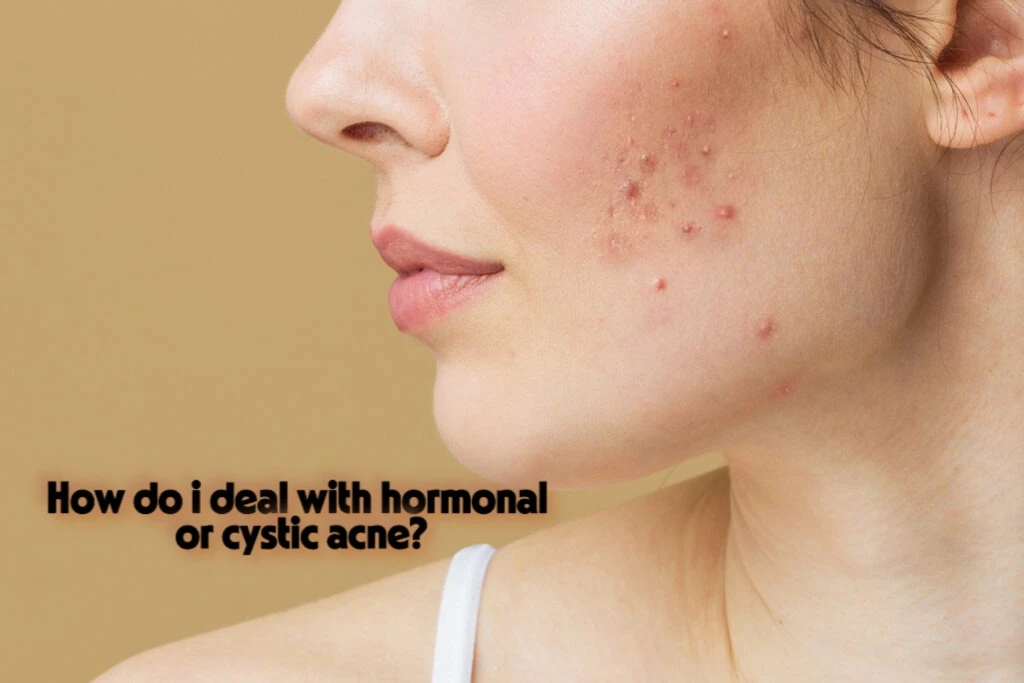How do i deal with hormonal or cystic acne?
Dealing with hormonal or cystic acne can be challenging, but with a combination of targeted skincare, lifestyle changes, and possibly medical intervention, it can be effectively managed. Here’s a comprehensive guide in around 500 words to help you approach hormonal or cystic acne:
Understanding Hormonal and Cystic Acne
Hormonal acne is triggered by fluctuations in hormones, particularly androgens like testosterone, which increase oil production in the skin. This often occurs during puberty, menstruation, pregnancy, or as a result of conditions like polycystic ovarian syndrome (PCOS). Cystic acne is the most severe form of acne, where deep, inflamed cysts develop beneath the skin and can be painful and prone to scarring.
1. Medical Treatments
-
Oral Medications:
Birth control pills are commonly prescribed to women to regulate hormones and reduce acne. Anti-androgen medications like spironolactone can also help by blocking excess androgens. For severe cases, isotretinoin (Accutane) may be recommended by dermatologists. -
Topical Treatments:
Retinoids (like adapalene or tretinoin) help promote cell turnover and prevent clogged pores. Benzoyl peroxide and salicylic acid can help reduce inflammation and kill acne-causing bacteria, but cystic acne often requires stronger options. -
In-Office Procedures:
Cortisone injections can rapidly reduce swelling in individual cysts. Chemical peels and light therapy may also be recommended.
2. Skincare Routine
-
Gentle Cleansing:
Use a mild, non-comedogenic cleanser twice daily. Avoid harsh scrubs, which can irritate the skin and worsen inflammation. -
Moisturizing:
Even oily or acne-prone skin needs hydration. Use an oil-free, non-comedogenic moisturizer to maintain the skin barrier. -
Spot Treatment:
Sulfur, salicylic acid, or benzoyl peroxide spot treatments can help reduce inflammation. -
Sun Protection:
Always wear sunscreen (SPF 30 or higher) to prevent hyperpigmentation and support skin healing.
3. Lifestyle and Dietary Adjustments
-
Balanced Diet:
Some people find improvement by reducing dairy and high-glycemic foods (like sugar and white bread), which may trigger hormonal fluctuations. -
Stress Management:
Chronic stress increases cortisol, which can exacerbate acne. Techniques like meditation, yoga, and adequate sleep are helpful. -
Hydration:
Drinking plenty of water helps flush toxins and keep skin healthy.
4. Hormonal Evaluation
If your acne is persistent, painful, and mostly appears around the jawline, chin, or neck—especially around your menstrual cycle—it may be wise to see an endocrinologist. Testing for hormonal imbalances (like PCOS) can guide more targeted treatments.
5. Patience and Consistency
Treating hormonal or cystic acne is a long-term commitment. It can take several weeks or months to see noticeable improvement. Avoid switching products too frequently and always introduce new treatments gradually.
In summary, hormonal and cystic acne require a holistic approach—combining effective skincare, medical treatment, and lifestyle changes. Consulting a dermatologist is crucial for tailored advice and to prevent long-term scarring.

Related Blog
What Causes Oily Skin and Can It Be Managed Naturally? Exploring Root Causes and Gentle Solutions
Aug 2, 2025 by Admin
General
What Are the Signs That You Have Sensitive Skin? Key Symptoms to Help You Identify This Delicate Skin Type
Aug 1, 2025 by Admin
General